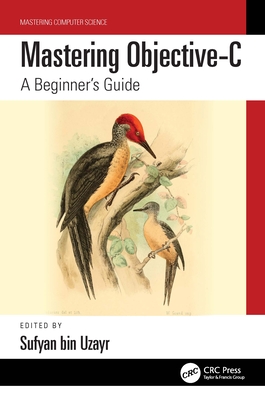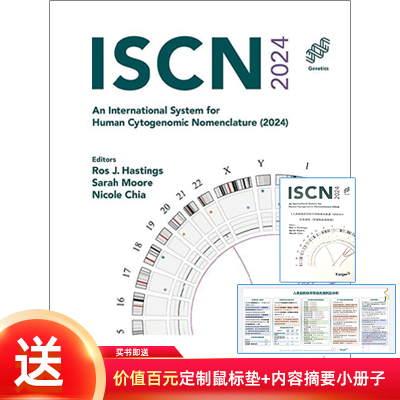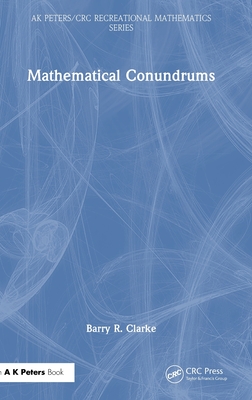图书简介
Welcome to the 21st Edition of Nelson Textbook of Pediatrics - the reference of choice among pediatricians, pediatric residents, and others involved in the care of young patients. This fully revised edition continues to provide the breadth and depth of knowledge you expect from Nelson, while also keeping you up to date with new advances in the science and art of pediatric practice. Authoritative and reader-friendly, it delivers the information you need in a concise, easy-to-use format for everyday reference and study. From rapidly changing diagnostic and treatment protocols to new technologies to the wide range of biologic, psychologic, and social problems faced by children today, this comprehensive 2-volume reference keeps you on the cutting edge of the very best in pediatric care. Includes more than 70 new chapters, including Postural Orthostatic Tachycardia Syndrome (POTS), Rare and Undiagnosed Diseases, Approach to Mitochondrial Disorders, Electronic Nicotine Delivery Systems, Zika, update on Ebola, Epigenetics, Autoimmune Encephalitis, Global Health, Racism, Media Violence, Strategies for Health Behavior Change, Positive Parenting, and many more. Features hundreds of new figures and tables throughout for visual clarity and quick reference. Offers new and expanded information on CRISPR gene editing; LGBT health care; gun violence; vaccinations; immune treatment with CAR-T cells; new technology in imaging and genomics; new protocols in cancer, genetics, immunology, and pulmonary medicine; and much more. Provides fresh perspectives from four new associate editors: Nathan J. Blum of The Children’s Hospital of Philadelphia; Karen Wilson of Mt. Sinai School of Medicine in New York; Samir S. Shah of Cincinnati Children’s Hospital Medical Center; and Robert C. Tasker of Boston Children’s Hospital. Provides regular updates online, written exclusively for Nelson. Remains your indispensable source for definitive, evidence-based answers on every aspect of pediatric care. Enhanced eBook version included with purchase. Your enhanced eBook allows you to access all of the text, figures, and references from the book on a variety of devices.
ChapTitle Overview of Pediatrics Child Health Disparities Racism Global Health Quality and Value in Healthcare for Children Safety in Healthcare for Children Ethics in Pediatric Care Pediatric Palliative Care Domestic and International Adoption Foster and Kinship Care Medical Evaluation of the Foreign-Born Child Cultural Issues in Pediatric Care Maximizing Children’s Health: Screening, Anticipatory Guidance, and Counseling Injury Control Impact of Violence on Children Bullying, Cyberbullying, and School Violence Media Violence Effects of War on Children Child Trafficking Abused and Neglected Children Sexual Abuse Medical Child Abuse (Factitious Disorder by Proxy, Munchausen Syndrome by Proxy) Strategies for Health Behavior Change Developmental and Behavioral Theories Positive Parenting and Support Assessment of Fetal Growth and Development The Newborn The First Year Infant Crying and Colic The Second Year The Preschool Years Middle Childhood Adolescence Assessment of Growth Developmental and Behavioral Screening and Surveillance Childcare Loss, Separation, and Bereavement Sleep Medicine Psychosocial Assessment and Interviewing Psychopharmacology Psychotherapy and Psychiatric Hospitalization Somatic Symptom and Related Disorders Rumination and Pica Rumination Disorder Pica Motor Disorders and Habits Tic Disorders Stereotypic Movement Disorders Anxiety Disorders Mood Disorders Major and Other Depressive Disorders Bipolar and Related Disorders Suicide and Attempted Suicide Eating Disorders Disruptive, Impulse-Control, and Conduct Disorders Tantrums and Breath-holding spells Lying, Stealing and Truancy Aggression Self-injurious behavior Childhood Psychoses Schizophrenia Spectrum and Other Psychotic Disorders Psychosis Associated with Epilepsy Catatonia in Children and Adolescents Acute Phobic Hallucinations of Childhood Neurodevelopmental and Executive Function and Dysfunction Attention-Deficit/Hyperactivity Disorder Dyslexia Math and Writing Disabilities Math Disabilities Writing Disabilities Language Development and Communication Disorders Child-Onset Fluency Disorder Developmental Delay and Intellectual Disability Intellectual Disability with Regression Autism Spectrum Disorder Nutritional Requirements Feeding Healthy Infants, Children, and Adolescents Nutrition, Food Security, and Health Refeeding Syndrome Failure to Thrive Overweight and Obesity Rapid-Onset Obesity with Hypothalamic Dysfunction, Hypoventilation and Autonomic Dysregulation (ROHHAD) Vitamin A Deficiencies and Excess Vitamin B Complex Deficiencies and Excess Thiamine (Vitamin B1) Riboflavin (Vitamin B2) Niacin (Vitamin B3) Vitamin B6 (Pyridoxine) Biotin Folate Vitamin B12 (Cobalamin) Vitamin C (Ascorbic Acid) Vitamin D Deficiency (Rickets) and Excess Vitamin E Deficiency Vitamin K Deficiency Micronutrient Mineral Deficiencies Electrolyte and Acid-Base Disorders Composition of Body Fluids Regulation of Osmolality and Volume Sodium Potassium Magnesium Phosphorus Acid-Base Balance Maintenance and Replacement Therapy Deficit Therapy Fluid and Electrolyte Treatment of Specific Disorders Pediatric Pharmacogenetics, Pharmacogenomics, and Pharmacoproteomics Principles of Drug Therapy Anesthesia and Perioperative Care Anesthetic Neurotoxicity Sedation and Procedural Pain Pediatric Pain Management Poisoning Complementary Therapies, and Integrative Medicine Emergency Medical Services for Children Interfacility Transport of the Seriously Ill or Injured Pediatric Patient Outcomes and Risk-Adjustment Principles Applicable to the Developing World Triage of the Acutely Ill Child Resuscitation Acute Care of the Victim of Multiple Trauma Spinal Cord Injuries in Children Care of Abrasions and Minor Lacerations Neurologic Emergencies and Stabilization Brain Death Syncope POTS Shock Respiratory Distress and Failure Mechanical Ventilation Long-term Mechanical Ventilation Altitude-associated Illness in Children (Acute Mountain Sickness) Drowning and Submersion Injury Burn injuries Cold Injuries Integration of Genetics into Pediatric Practice Genetic Counseling Management and Treatment of Genetic Disorders The Genetic Approach in Pediatric Medicine The Human Genome Patterns of Genetic Transmission Cytogenetics Methods of Chromosome Analysis Down Syndrome and Other Abnormalities of Chromosome Number Abnormalities of Chromosome Structure Sex Chromosome Aneuploidy Fragile Chromosome Sites Mosaicism Chromosome Instability Syndromes Uniparental Disomy and Imprinting Genetics of Common Disorders Major Genetic Approaches to the Study of Common Pediatric Disorders Epigenome-Wide Association Studies and Disease Genetic Approaches to Rare and Undiagnosed Diseases An Approach to Inborn Errors of Metabolism Defects in Metabolism of Amino Acids Phenylalanine Tyrosine Methionine Cysteine/Cystine Tryptophan Valine, Leucine, Isoleucine, and Related Organic Acidemias Glycine Serine Proline Glutamic Acid Genetic Disorders of Neurotransmitters Urea Cycle and Hyperammonemia (Arginine, Citrulline, Ornithine) Histidine Lysine N-Acetylaspartic Acid (Canavan Disease) Defects in Metabolism of Lipids Disorders of Mitochondrial Fatty Acid ss-Oxidation Disorders of Very Long Chain Fatty Acids Disorders of Lipoprotein Metabolism and Transport Lipidoses (Lysosomal Storage Disorders) Mucolipidoses Defects in Metabolism of Carbohydrates Glycogen Storage Diseases Defects in Galactose Metabolism Defects in Fructose Metabolism Defects in Intermediary Carbohydrate Metabolism Associated with Lactic Acidosis Defects in Pentose Metabolism Disorders of Glycoprotein Degradation Congenital Disorders of Glycosolation Approach to Mitochondrial Disorders Mucopolysaccharidoses Disorders of Purine and Pyrimidine Metabolism Hutchinson-Gilford Progeria Syndrome The Porphyrias Hypoglycemia Overview of Mortality and Morbidity The Newborn Infant History in Neonatal Pediatrics Physical Examination of the Newborn Infant Routine Newborn Care Circumcision Parent-Infant Bonding High-Risk Pregnancies The Fetus Fetal Growth and Maturity Fetal Distress Maternal Disease and the Fetus Maternal Medication and Toxin Exposure and the Fetus Teratogens Radiation Intrauterine Diagnosis of Fetal Disease Treatment and Prevention of Fetal Disease Fetal Intervention and Surgery The High-Risk Infant Multiple Gestation Pregnancies Extreme and Very Preterm Infants Moderate and Late Pre-Term Infants Term and Post-Term Infants Follow-up of High-Risk Infants after Discharge Infant Transport Clinical Manifestations of Diseases in the Newborn Period Hyperthermia Neontal Cold Injury Edema Hypocalcemia (Tetany) Hypermanganazemia Nervous System Disorders The Cranium Traumatic, Epidural, Subdural, and Subarachnoid Hemorrhage Intracranial-Intraventricular Hemorrhage and Periventricular Leukomalacia Hypoxia-Ischemic Encephalopathy Spine and Spinal Cord Peripheral Nerve Injuries Neonatal Resuscitation and Delivery Room Emergencies Respiratory Tract Disorders Transition to Pulmonary Respiration Apnea Respiratory Distress Syndrome (Hyaline Membrane Disease) BPD PDA Transient Tachypnea of the Newborn Aspiration of Foreign Material (Fetal Aspiration Syndrome, Aspiration Pneumonia) Meconium Aspiration Persistent Pulmonary Hypertension of the Newborn (Persistent Fetal Circulation) Diaphragmatic Hernia Foramen of Morgagni Hernia Paraesophageal Hernia Eventration Extrapulmonary Air Leaks (Pneumothorax, Pneumomediastinum, Pulmonary Interstitial Emphysema, Pneumopericardium) Pulmonary Hemorrhage Digestive System Disorders Meconium Ileus, Peritonitis, and Intestinal Obstruction Necrotizing Enterocolitis Jaundice and Hyperbilirubinemia in the Newborn Kernicterus Blood Disorders Anemia in the Newborn Infant Hemolytic Disease of the Newborn (Erythroblastosis Fetalis) Plethora in the Newborn Infant (Polycythemia) Hemorrhage in the Newborn Infant The Umbilicus Abstinence Syndromes Neonatal Abstinence (Withdrawal) Maternal Selective Serotonin Reuptake Inhibitors and Neonatal Behavioral Syndromes Fetal Alcohol Exposure The Endocrine System Infants of Diabetic Mothers Dysmorphology Epidemiology of Infections Healthcare?Associated Infections (HAI) Congenital Infections Adolescent Physical and Social Development Gender and Sexual Identity Gay, Lesbian & Bisexual Adolescents Transgender Care The Epidemiology of Adolescent Health Problems Delivery of Health Care to Adolescents Legal Issues Screening Procedures Transitioning to Adult Care Violent Behavior Substance Abuse Alcohol Tobacco and Electronic Nicotine Delivery Systems Marijuana Inhalants Hallucinogens Cocaine Amphetamines Stimulant Abuse and Diversion Opiates Bath salts and other drugs of abuse The Breast Menstrual Problems Amenorrhea Abnormal Uterine Bleeding Dysmenorrhea Premenstrual Syndrome and Premenstrual Dysphoric Disorder Contraception Long-Acting Reversible Contraception (LARC) Other Progestin-only Methods Combined Hormonal Contraceptives Emergency Contraception (EC) Dual Protection Other Barrier Methods Other Methods Adolescent Pregnancy Adolescent Sexual Assault Sexually Transmitted Infections Chronic Overlapping Pain Syndromes Chronic Fatigue Syndrome/Systemic Exertion Intolerance Disease Evaluation of Suspected Immunodeficiency Lymphocyte Development and Function Primary Defects of Antibody Production Treatment of B-Cell Defects Primary Defects of Cellular Immunity Immune Deficiencies Affecting Multiple Cell Types Severe Combined Immunodeficiency Combined Immunodeficiency Defects of Innate Immunity Treatment of Cellular or Combined Immunodeficiency Immune Dysregulation with Autoimmunity or Lymphoproliferation Neutrophils Monocytes, Macrophages, and Dendritic Cells Eosinophils Disorders of Phagocyte Function Leukopenia Leukocytosis The Complement System Disorders of the Complement System Evaluation of the Complement System Genetic Deficiencies of Complement Components Deficiencies of Plasma, Membrane, or Serosal Complement Control Proteins Secondary Disorders of Complement Treatment of Complement Disorders Principles and Clinical Indications of Hematopoietic Stem Cell Transplantation Hematopoietic Stem Cell Transplantation from Alternative Sources and Donors Graft-Versus-Host Disease, Rejection, and Veno-occlusive Disease Infectious Complications of Hematopoietic Stem Cell Transplantation Late Effects of Hematopoietic Stem Cell Transplantation Allergy and the Immunologic Basis of Atopic Disease Diagnosis of Allergic Disease Allergic Rhinitis Childhood Asthma Atopic Dermatitis (Atopic Eczema) Insect Allergy Ocular Allergies Urticaria (Hives) and Angioedema Anaphylaxis Serum Sickness Food Allergy and Adverse Reactions to Foods Adverse Reactions to Drugs Evaluation of Suspected Rheumatic Disease Treatment of Rheumatic Diseases Juvenile Idiopathic Arthritis Ankylosing Spondylitis and Other Spondyloarthritides Reactive and Post-Infectious Arthritis Systemic Lupus Erythematosus Neonatal Lupus Juvenile Dermatomyositis Scleroderma and Raynaud Phenomenon Behcet Disease Sjoegren Syndrome The Hereditary Periodic Fever Syndromes and Other Systemic Autoinflammatory Diseases Amyloidosis Sarcoidosis Kawasaki Disease Vasculitis Syndromes Henoch-Schoenlein Purpura Takayasu Arteritis Polyarteritis Nodosa and Cutaneous Polyarteritis Nodosa ANCA-associated vasculitis Other Vasculitic Syndromes Musculoskeletal Pain Syndromes Growing Pains Small Fiber Polyneuropathy Fibromyalgia Complex Regional Pain Syndrome Erythromelalgia Miscellaneous Conditions Associated With Arthritis Diagnostic Microbiology The Microbiome and Pediatric Health Immunization Practices International Immunization Practices Infection Prevention and Control Childcare and Communicable Diseases Health Advice for Children Traveling Internationally Fever Fever Without a Focus in the Neonate (0-2 mos) Fever in the Older Child Fever of Unknown Origin Infections in Immunocompromised Persons Infections Occurring with Primary Immunodeficiencies Infections Occuring with Acquired Immunodeficiencies Prevention of Infection in Immunocompromised Persons Infection Associated with Medical Devices Principles of Antibacterial Therapy Staphylococcus Staphylococcus aureus Toxic Shock Syndrome Coagulase-Negative Staphylococci Streptococcus pneumoniae (Pneumococcus) Group A Streptococcus Rheumatic Fever Group B Streptococcus Non-Group A or B Streptococci Enterococcus Diphtheria (Corynebacterium diphtheriae) Listeria monocytogenes Actinomyces Nocardia Neisseria meningitidis (Meningococcus) Neisseria gonorrhoeae (Gonococcus) Kingella kingae Haemophilus influenzae Chancroid (Haemophilus ducreyi) Moraxella catarrhalis Pertussis (Bordetella pertussis and Bordetella parapertussis) Salmonella Nontyphoidal Salmonellosis Enteric Fever (Typhoid Fever) Shigella Escherichia coli Cholera Campylobacter Yersinia Yersinia enterocolitica Yersinia pseudotuberculosis Plague (Yersinia pestis) Aeromonas and Plesiomonas Aeromonas Plesiomonas shigelloides Pseudomonas, Burkholderia, and Stenotrophomonas Pseudomonas Burkholderia Cepacia Complex Stenotrophomonas Tularemia (Francisella tularensis) Brucella Legionella Bartonella Cat Scratch Disease (Bartonella henselae) Bartonellosis (Bartonella bacilliformis) Trench Fever (Bartonella quintana) Bacillary Angiomatosis and Bacillary Peliosis Hepatis (Bartonella henselae and Bartonella quintana) Botulism (Clostridium botulinum) Tetanus (Clostridium tetani) Clostridium difficile Infection Other Anaerobic Infections Principles of Antimycobacterial Therapy Tuberculosis (Mycobacterium tuberculosis) Hansen Disease (Mycobacterium leprae) Nontuberculous Mycobacteria Syphilis (Treponema pallidum) Nonvenereal Treponemal Infections Yaws (Treponema pertenue) Bejel (Endemic Syphilis: Treponema pallidum endemicum) Pinta (Treponema carateum) Leptospira Relapsing Fever (Borrelia) Lyme Disease (Borrelia burgdorferi) Mycoplasma pneumoniae Genital Mycoplasmas (Mycoplasma hominis, Mycoplasma genitalium, and Ureaplasma urealyticum) Chlamydia (Chlamydophila) pneumoniae Chlamydia trachomatis Trachoma Genital Tract Infections Conjunctivitis and Pneumonia in Newborns Lymphogranuloma Venereum Psittacosis (Chlamydia psittaci) Spotted Fever Group Rickettsioses Rocky Mountain Spotted Fever (Rickettsia rickettsii) Mediterranean Spotted Fever or Boutonneuse Fever (Rickettsia conorii) Rickettsialpox (Rickettsia akari) Scrub Typhus (Orientia tsutsugamushi) Typhus Group Rickettsioses Murine (endemic or flea-borne) Typhus (Rickettsia typhi) Epidemic (louse-borne) Typhus (Rickettsia prowazekii) Ehrlichioses and Anaplasmosis Q Fever (Coxiella burnetii) Principles of Antifungal Therapy Candida Neonatal Infections Infections in Immunocompetent Children and Adolescents Infections in Immunocompromised Children and Adolescents Cryptococcus neoformans Malassezia Aspergillus Allergic Disease (Hypersensitivity Syndromes) Saprophytic (Noninvasive) Syndromes Invasive Disease Histoplasmosis (Histoplasma capsulatum) Blastomycosis (Blastomyces dermatitidis) Coccidioidomycosis (Coccidioides Species) Paracoccidioides brasiliensis Sporotrichosis (Sporothrix schenckii) Zygomycosis (Mucormycosis) Pneumocystis Jirovecii Principles of Antiviral Therapy Measles Rubella Mumps Polioviruses Nonpolio Enteroviruses Parvoviruses Herpes Simplex Virus Varicella-Zoster Virus Infections Epstein-Barr Virus Cytomegalovirus Roseola (Human Herpesviruses 6 and 7) Human Herpesvirus 8 Influenza Viruses Parainfluenza Viruses Respiratory Syncytial Virus Human Metapneumovirus Adenoviruses Rhinoviruses Coronaviruses Rotaviruses, Calicivirus, and Astrovirus Human Papillomaviruses Arboviral Infections Eastern Equine Encephalitis Western Equine Encephalitis St. Louis Encephalitis West Nile Encephalitis Powassan Encephalitis LaCrosse and California Encephalitis Colorado Tick Fever Chikungunya Fever Venezuelan Equine Encephalitis Japanese Encephalitis Tick-Borne Encephalitis Zika Virus Dengue Fever and Dengue Hemorrhagic Fever Yellow Fever Other Viral Hemorrhagic Fevers Lymphocytic Choriomeningitis Virus (LCMV) Hantavirus Pulmonary Syndrome Rabies Polyomaviruses Acquired Immunodeficiency Syndrome (Human Immunodeficiency Virus) Human T-Lymphotropic Viruses (1 and 2) Transmissible Spongiform Encephalopathies Principles of Antiparasitic Therapy Primary Amebic Meningoencephalitis Amebiasis Giardiasis and Balantidiasis Giardia lamblia Balantidiasis Cryptosporidium, Isospora, Cyclospora, and Microsporidia Trichomoniasis (Trichomonas vaginalis) Leishmaniasis (Leishmania) African Trypanosomiasis (Sleeping Sickness; Trypanosoma brucei complex) American Trypanosomiasis (Chagas Disease; Trypanosoma cruzi) Malaria (Plasmodium) Babesiosis (Babesia) Toxoplasmosis (Toxoplasma gondii) Ascariasis (Ascaris lumbricoides) Hookworms (Necator americanus and Ancylostoma spp.) Cutaneous Larva Migrans Trichuriasis (Trichuris trichuria) Enterobiasis (Enterobius vermicularis) Strongyloidiasis (Strongyloides stercoralis) Lymphatic Filariasis (Brugia malayi, Brugia timori, and Wuchereria bancrofti) Other Tissue Nematodes Toxocariasis (Visceral and Ocular Larva Migrans) Trichinellosis (Trichinella spiralis) Schistosomiasis (Schistosoma) Flukes (Liver, Lung, and Intestinal) Adult Tapeworm Infections Cysticercosis Echinococcosis (Echinococcus granulosus and Echinococcus multilocularis) Normal Digestive Tract Phenomena Major Symptoms and Signs of Digestive Tract Disorders Development and Developmental Anomalies of the Teeth Disorders of the Oral Cavity Associated with Other Conditions Malocclusion Cleft Lip and Palate Syndromes with Oral Manifestations Dental Caries Periodontal Diseases Dental Trauma Common Lesions of the Oral Soft Tissues Diseases of the Salivary Glands and Jaws Diagnostic Radiology in Dental Assessment Embryology, Anatomy, and Function of the Esophagus Common Clinical Manifestations and Diagnostic Aids Congenital Anomalies Esophageal Atresia and Tracheoesophageal Fistula Laryngotracheoesophageal Clefts Obstructing and Motility Disorders of the Esophagus Dysmotility Hiatal Hernia Gastroesophageal Reflux Disease Complications of Gastroesophageal Reflux Disease Eosinophilic Esophagitis and Non-GERD Esophagitis Esophageal Perforation Esophageal Varices Ingestions Foreign Bodies in the Esophagus Caustic Ingestions Normal Development, Structure, and Function Pyloric Stenosis and Other Congenital Anomalies of the Stomach Hypertrophic Pyloric Stenosis Congenital Gastric Outlet Obstruction Gastric Duplication Gastric Volvulus Hypertrophic Gastropathy Intestinal Atresia, Stenosis, and Malrotation Duodenal Obstruction Jejunal and Ileal Atresia and Obstruction Malrotation Intestinal Duplications, Meckel Diverticulum, and Other Remnants of the Omphalomesenteric Duct Intestinal Duplication Meckel Diverticulum and Other Remnants of the Omphalomesenteric Duct Mot
Trade Policy 买家须知
- 关于产品:
- ● 正版保障:本网站隶属于中国国际图书贸易集团公司,确保所有图书都是100%正版。
- ● 环保纸张:进口图书大多使用的都是环保轻型张,颜色偏黄,重量比较轻。
- ● 毛边版:即书翻页的地方,故意做成了参差不齐的样子,一般为精装版,更具收藏价值。
关于退换货:- 由于预订产品的特殊性,采购订单正式发订后,买方不得无故取消全部或部分产品的订购。
- 由于进口图书的特殊性,发生以下情况的,请直接拒收货物,由快递返回:
- ● 外包装破损/发错货/少发货/图书外观破损/图书配件不全(例如:光盘等)
并请在工作日通过电话400-008-1110联系我们。
- 签收后,如发生以下情况,请在签收后的5个工作日内联系客服办理退换货:
- ● 缺页/错页/错印/脱线
关于发货时间:- 一般情况下:
- ●【现货】 下单后48小时内由北京(库房)发出快递。
- ●【预订】【预售】下单后国外发货,到货时间预计5-8周左右,店铺默认中通快递,如需顺丰快递邮费到付。
- ● 需要开具发票的客户,发货时间可能在上述基础上再延后1-2个工作日(紧急发票需求,请联系010-68433105/3213);
- ● 如遇其他特殊原因,对发货时间有影响的,我们会第一时间在网站公告,敬请留意。
关于到货时间:- 由于进口图书入境入库后,都是委托第三方快递发货,所以我们只能保证在规定时间内发出,但无法为您保证确切的到货时间。
- ● 主要城市一般2-4天
- ● 偏远地区一般4-7天
关于接听咨询电话的时间:- 010-68433105/3213正常接听咨询电话的时间为:周一至周五上午8:30~下午5:00,周六、日及法定节假日休息,将无法接听来电,敬请谅解。
- 其它时间您也可以通过邮件联系我们:customer@readgo.cn,工作日会优先处理。
关于快递:- ● 已付款订单:主要由中通、宅急送负责派送,订单进度查询请拨打010-68433105/3213。
本书暂无推荐
本书暂无推荐














